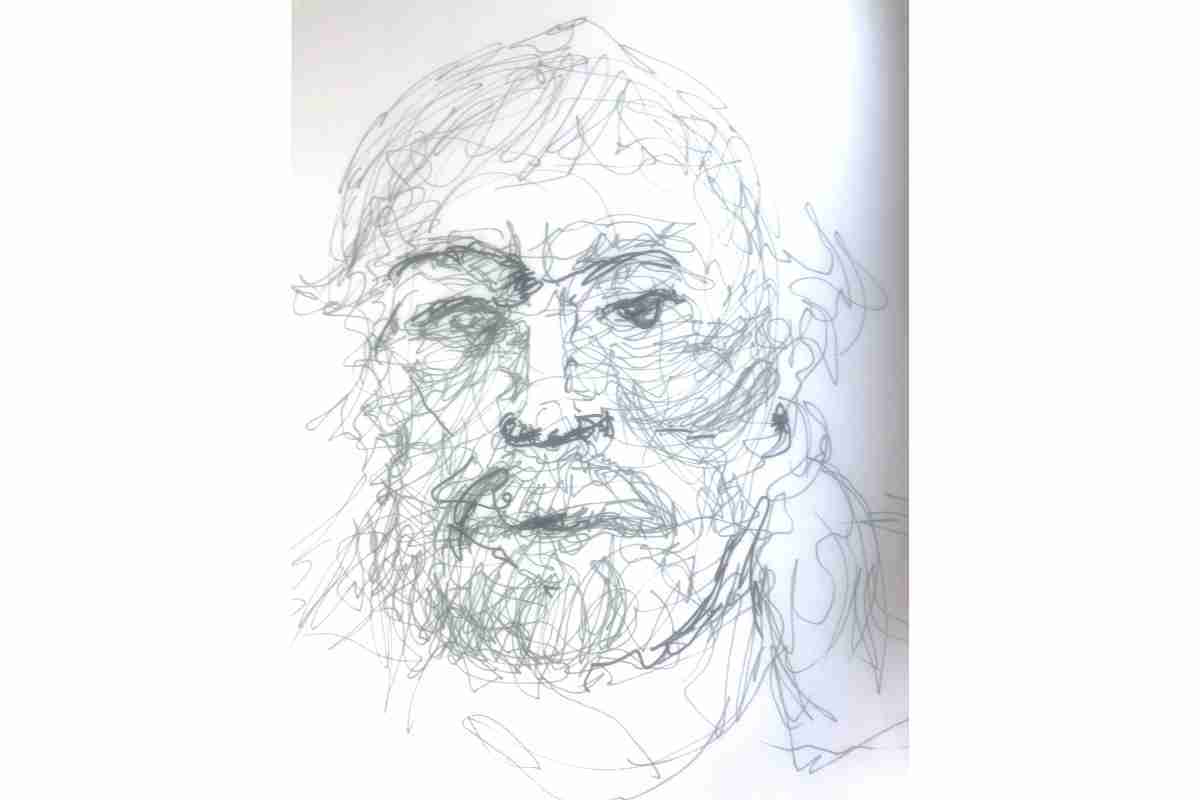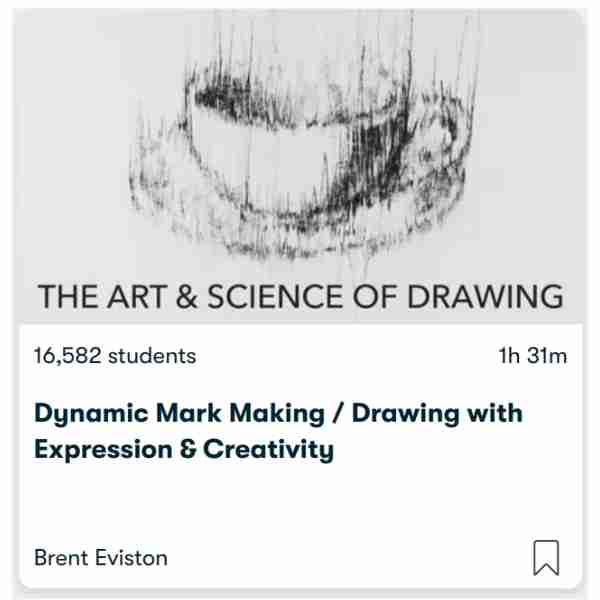How Do you Draw a Scribble Drawing?
Scribble drawing is a popular technique that artists specialize in to create a practical and impressive-looking drawing from relatively simple materials.
In this post, I will outline how to create a scribble illustration from observation using conventional media and approaches to drawing.
Scribble drawing has some unique requirements that need to be adhered to if the drawing you are looking to create will be successful when completed.
Is Scribble Drawing Easy?
Scribble drawing is an easy and fun activity accessible to artists of all abilities and age groups. The basics of this particular art technique are simple enough for any artist to practice and develop with pen and paper at home.
The only aspect that some individuals may struggle with is retaining loose enough drawing techniques while retaining the overall proportions of the features of the face. This will be easy to maintain for some people who are accustomed to sketching loosely.
Dynamic Mark Making/ Drawing with Expression and Creativity Use this Link
View More of Brent Eviston Classes at Skillshare Use this LInk
However, it may take a little longer to perfect this drawing technique for artists who are not trained in experimental drawing. However, as with all techniques, it requires practice to learn.
Related Posts:
- Cross Hatching Techniques: A Detailed Guide
- Scribble Drawing: Everything You Need To Know
- How to Sketch Loosely
- Experimental Drawing Techniques For Inspiring Students
What to Art Supplies to Draw With?
Pen and ink or fine biro pen are often the medium of choice for artists looking to integrate free-flowing quality of line into their scribble drawing. Some artists limit themselves to applying two colors: blue and black or green and red.
To create a drawing of a face. There are basically two options that can be used for general inspiration. Drawing from a photographic reference is an excellent choice.
The main advantage is that the artist can draw a static image that is not in constant movement or subject to changes in light and value.
Scribble Drawings from Observation
To create a drawing from observation using the scribble method, you must find a person to draw. Once you have achieved this, you can consider the viewpoint you wish to draw.
The basic front view is okay if you create a simple drawing and apply loose Scribble lines. However, if you want to create more dynamic portraits, a three-quarter view will produce a more dynamic portrait drawing overall.
The artists blank using a pen to create excellent scribble drawings using fine line pens and ballpoint pens. Notice the techniques used to create a image that appears in proportion on the surface.
All of the basic features of the portrait are in proportion. Blank applies a loosely drawn line onto and around the main features of the face.
This drawing looks in proportion; however, it is rendered using a short dynamic line applied to the drawing.
Scribble drawing of portraits needs to retain recognizable proportions and realistic features if they succeed.
It is good to draw with multiple colored pens to add depth to your drawing.
For example, adding red ink to black or blue will add depth to your, especially around the features of the face.
Creating Value in Scribble Drawings
Creating contrast and value is an essential consideration if the overall appearance of your drawing will be successful.
- Creating value is simple when scribble drawing. Closer, denser marks and lines will create darker areas of value.
- Whereas light, more spaced-out line areas will have a lighter value range.
Creating a Scumbling Value Scale
If you want to practice refining areas of value and tone in your scribble drawing technique, consider creating a scumbling value, this will enable you the practice applying value to your drawing and perfecting the skills. Read my post, How to Create a Scumbling Value Scale.
Drawing from a Reference
Many of the most dynamic and successful scribble drawings portray interesting expressions and alternative views.
If you are looking to create a portrait in this manner, using a photograph or visual reference of some description is a good idea.
This approach to drawing enables you to draw a static image and not a moving individual.
This will also enable artists looking to develop their skills to plot the proportions and individual features of the face down on the page, ensuring they are as accurate as possible before more expressive lines are applied.
Drawing in response to a photograph reference also allows artists to draw varied characters and expressions.
The challenge here is that the individual artists will need to interpret the subject differently.
Holding the pen when working with Pen and Ink
One of the most essential tips that any artist will need to learn to create successful scribble drawings is drawing quickly and loosely.
Holding the pen in a particular way is essential. For example, if the pen is held rigidly at the bottom, the marks created will appear rigid and stiff.
It is far more advisable to hold the pen loosely towards the end as it will create the free-flowing quality of line you are looking to create.
If this technique seems alien to you, I suggest completing a few warm-up drawing exercises to perfect the correct technique.
Practice Speed Drawing
Quick or gestural drawing techniques are an excellent way to develop the confidence to create successful art and scribble drawings.
If you are looking to develop this aspect of your art and drawing, you should employ a specific routine to develop a more vigorous drawing method.
Firstly, you should open your mind to creating different styles of artwork. Speed scribble drawings can look crude and irregular, and inexperienced practitioners should prepare themselves.
I would suggest creating sketches under timed conditions. Beginning with short sketches from direct observation.
Scribble Drawing Techniques
Scribble drawing methods can be broken down into two simple methods:
Continuous Line Drawing Portrait
This drawing technique involves keeping your drawing pen or pencil on the page as you draw with a dynamic fluid line.
This technique lends itself incredibly well to quickly drawing a portrait and loosely sketched portraits of the face and head.
A fast-drawn continuous line is also ideal for creating expressive unrestrained scribble portraits.
Broken Line Technique
As the name suggests, broken lines involve lifting the pen from the surface of the paper as broken lines are drawn onto your artwork.
Lines and details can be lightly sketched in pencil beforehand. This approach is convenient for people who need to set the proportions of a portrait before.
This provides the artist with a framework to quickly draw scribble lines over the top of your initial sketch with a pen. Progressing onto the application of value and tone.
Lines can be lightly sketched in pencil beforehand. This approach is particularly practical for people who need to set the proportions of the head and face before.
This provides the artist with a framework to quickly draw scribble lines over the top of your initial sketch with a pen. Progressing onto the application of value and tone.
My Favourite Drawing Resources
General Drawing Courses. I really like Udemy if you are looking to develop your knowledge of drawing techniques Udemy is an excellent choice due to its wide range of creative courses and excellent refund policy. They often have monthly discounted deals for new customers, which you can check here. Use my link.
Sketching and Collage. Take a look at this sketching resource I have created. Use this link.
Proko. Is one of my favorite teachers who surpasses in the teaching of Anatomy and Figure drawing. Prokos course breaks down the drawing of the human body into easy-to-follow components aiding the beginner to make rapid progress. For this, I really like Proko.
Art Easels. One of my favorite ways to draw is by using a drawing easel, which develops the skill of drawing on a vertical surface. The H frame easel is an excellent vertical easel way to add variety to the style and type of marks you create when using a drawing board.
To see all of my most up-to-date recommendations, check out this resource I made for you.


